Tokyo (Japan)
Cruise Port schedule, live map, terminals, news
Port Tokyo cruise ship schedule shows timetable calendars of all arrival and departure dates by month. The port's schedule lists all ships (in links) with cruises going to or leaving from Tokyo, Japan. To see the full itineraries (ports of call dates and arrival / departure times) and their lowest rates – just follow the corresponding ship-link.
| Day | Ship | Arrival | Departure |
|---|---|---|---|
| 10 January, 2026 Saturday | 08:00 | 19:00 | |
| 14 January, 2026 Wednesday | 13:00 | 15 Jan, 20:00 | |
| 23 January, 2026 Friday | 07:00 | 16:00 | |
| 24 January, 2026 Saturday | 08:00 | 22:00 |
Tokyo is a large seaport and Japan's capital city (Tokyo Metropolis) located on Honshu Island's southern part (Tokyo Bay's western shore). Tokyo is also Japan's largest city with population around 14 million (metro around 37,5 million).
Tokyo Port (locode JPTYO) is one of the country's largest, with annual shipping traffic capacity ~100 million cargo tons and ~4,5 million TEU-containers. The Port employs 30,000+ people serving 32,000+ vessels annually.
The city is also served by two international airports - Narita and Haneda.
The city (named Edo) was renamed and became Japan's capital in 1868 when the Tokugawa dynasty was overthrown. Old Town Edo is the heart of downtown Tokyo and is most famous with the Imperial Palace and its surrounding parks. In Kasumigaseki district are located most government buildings.
Among Northern Tokyo's best-known tourist attractions are Ueno Park (shrines, tombs, pagodas), Tokyo National Museum (archeological artifacts and Japanese art), Senso-ji temple. Tokyo's best for shopping area is Ginza district.
The metropolis has been left in ruins twice - during Great Kanto earthquake (1923) and after the US bombings during WW2 (1939-1945). This explains why the landscape has predominantly modern architecture. The city features 2 distinctive towers: Tokyo Tower and Tokyo Skytree (opened 2012, Construction cost USD 600 million) - Japan's tallest and the world's second-tallest structure (height 634 m / 2080 ft, 35 floors) after Dubai's Burj Khalifa (height 830 m / 2722 .ft, opened in 2010, construction cost USD 1,5 billion).
Tokyo City has numerous gardens and parks, including 4 national parks, among which is Fuji-Hakone-Izu (comprising all of Izu Islands). During cherry blossoms bloom, many thousands of residents gather in the Inokashira Park, Ueno Park, and Shinjuku Gyoen National Garden for picnics under the trees. Each year on July's last Saturday, an amazing fireworks show over Sumida River attracts over 1 million spectators.
Port Tokyo
"Bureau of Port and Harbor" is Port Tokyo's authority company, which manages, administers, maintains and upgrades the seaport as infrastructure and facilities / terminals, also develops reclaimed lands, the waterfront area, all seaside parks.
The seaport serves not only Tokyo City but also a large part of Shinetsu Region and southern Tohoku (total population over 40 million). The port links land and sea transportation of both import and export goods. The port authority constantly enhances the port's terminals (cargo, container, ferry and cruise), providing warehouse storage facilities located mainly on reclaimed lands.
Statistics for 2009 show that the port served over 28,000 vessels. The handled cargo was around 72,5 million tons, of which around 40,7 million tons were foreign trade (exports 12,1 million tons, imports 28,6 million tons). The vast majority of the foreign trade through the port is with Asian countries (over 70%) The port's second-largest foreign shipping trade partner is North America and the 3rd is Europe.
Foreign Imported via cargo shipping commodities in Tokyo include chemical products, personal goods, electrical equipment, furniture, equipment, processed foods, fruits and vegetables, industrial machinery, pulp / paper. Port's foreign exports include chemical industry products, reusable materials, industrial machinery, autos and auto parts, scrap metal, electrical equipment, rubber and metal products.
Port's inbound domestic cargo shipping includes sand and gravel, cars, petroleum products, cement, pulp / paper, oil products. Port's outbound domestic cargo shipping includes cars, waste soil, miscellaneous cargoes (heavy oil, processed food, drinks, pulp / paper).
Port Tokyo covers a land area of around 4 mi2 (10 km2) and has breakwater with length 5,2 mi (8,4 km). The port's total length of wharves and piers is over 14 mi (22,7 km). The port has 204 berths, which include 15 container ship berths with total length ~2,8 mi (4,5 km). Tokyo is homeport for passenger and car ferries (Ro-Pax ships) linking the capital city with Shikoku and Kyushu.
Port's container terminals include:
- Oi Container Terminal (inaugurated in 1999) is one of the country's most modern terminals) covers almost 1 km2 (234 acres). The terminal has 7 berths (total length 1,5 mi / 2,4 km, max draft 15 m / 49 ft). The terminal is equipped with 20 gantry cranes and ultra-modern cargo distribution facilities and warehouses.
- Aomi Container Terminal has 5 berths (total length 0,98 mi / 1,57 km). Two berths are with max draft 13 m (43 ft) and 3 berths are with max draft 15 m (49 ft).
- Shinagawa Container Terminal is the japan's oldest (inaugurated in 1967) and public (managed by the metro Government). Currently, Shinagawa Terminal serves the container shipping trade with South Korea, Southeast Asia and China, plus several Japanese coastal routes. The terminal has all 3 berths (total length 623 ft / 190 m, max draft 10 m / 33 ft) and is equipped with 4 gantry cranes.
- Wakasu Terminal serves only domestic containerized cargo trade with 1 berth (length 623 ft / 190 m, max draft 11 m / 36 ft).
Port's bulk and breakbulk terminals include:
- Oi Foodstuffs Terminal has 3 berths and handles mainly imports (wheat, fresh fruits / vegetables, other foodstuffs). It has 3 berths and a wheat mill and silo complex (relocated from Harumi Terminal). Terminal's facilities include 2 transit sheds (for imported food products, 1 berth (length 755 ft / 230 m, max draft 12 m / 39 ft) and another 2 berths (total length 1247 ft / 380 m, max draft 11 m / 36 ft).
- Oi Marine Products Terminal has 2 berths (total length 1476 ft / 450 m, max draft 12 m / 39 ft) and handles imported frozen seafood. Behind the terminal, there are 3 cold-storage sheds, private warehouses, 6 cold-storage warehouses.
- Oi Construction Material Terminal has 4 berths (total length 918 ft / 280 m, max draft 5 m / 16 ft).
- Wakasu Construction Materials Terminal (inaugurated in 1989) is public and handles domestic sand, gravel, stone. It has 4 berths (total length 1214 ft / 370 m, max draft 5,5 m / 18 ft).
- Among others, Odaiba Liner Terminal, Foreign Trade Terminal and Harumi Terminal serve general cargo vessels.
- Odaiba Liner Terminal has 9 berths (total length 1,8 km, max draft 10 m / 33 ft) and handles mainly steel, pulp / paper, timber
- Bulk Cargo Terminal (inaugurated 2000) is public and handles mainly foreign cargo ships carrying coal and non-ferrous metals. It has 1 berth (length 787 ft / 240 m, max draft 12 m / 39 ft).
- Lumber Terminal 15 handles imports from the USA and Canada. It has 3 berths (total length 2360 ft / 720 m, max draft 12 m / 39 ft), open-air storage yard (capacity 200,000 m3 of timber).
- Tsukishima Terminal is a fisheries base with numerous cold-storage warehouses. This terminal is a major food source for the metro area. The terminal has 2 berths (total length 873 ft / 266 m, max draft 7,5 m / 25 ft).
- Shibaura Terminal has 6 berths (total length 2560 ft / 780 m, max draft 7,5 m / 25 ft) feet), handles general cargo (cement, papers, foodstuffs) and has numerous transit sheds and storage lots.
- Takeshiba Terminal has 3 berths (total length 1526 ft / 465 m, max draft 7,5 m / 25 ft) and handles general cargo and agricultural products.
- Hinode Terminal has 6 berths (total length 1850 ft / 564 m, max draft 6,7 m / 22 ft) and handles foodstuffs, paper, non-ferrous metals.
Port's Ro/Ro (Roll-on/roll-off) ship terminals include:
- Shinagawa Domestic Trade Terminal handles autos, newsprint, miscellaneous ro-ro cargoes to and from Port Hokkaido. The terminal has 3 berths (total length 1562 ft / 476 m, max draft 8 m / 26 ft) plus another 2 berths (total length 1245 ft / 380 m, max draft 10 m / 33 ft).
- Tatsumi Terminal (inaugurated 2002) handles steel and miscellaneous goods between Tokyo and remote Japanese islands. It has 13 berths (total length 3410 ft / 1040 m, max draft 5 m / 16 ft).
- No 10 Terminal serves regularly scheduled ferry and cargo ships linking Tokyo with Kyushu, Okinawa and Hokkaido. The list of handled here cargoes include steel, autos, pulp / paper, general cargo. The terminal has 11 berths (total length 4920 ft / 1500 m, max draft 7,5 m / 25 ft), plus another 13 berths (total length 3020 ft / 920 m, max draft 5 m / 16 ft).
- No 10 Multi-Purpose Terminal has 1 berth (length 590 ft / 180 m, max draft 7,5 m / 25 ft)
- Tokyo Ferry Terminal has 4 berths (total length 2960 ft / 902 m, max draft 8,5 m / 28 ft) and handles general cargo and autos.
Tokyo cruise port
Port's cruise terminals are 5 - Harumi, Takeshiba, 10-1 (multi-purpose), Hinode and Tokyo International Cruise Terminal (September 2020-opened).
Harumi Passenger Ship Terminal (1991-opened) handles both domestic and international cruise liners. The facility also serves as a conference/event center and features an observation deck offering breathtaking views of the city waterfront.
- At Harumi cruise terminal is also held the annual Tokyo Port Festival (in May) with a firework show.
- Harumi Terminal has 2 berths (total length 1495 ft / 456 m, max draft 10 m / 33 ft) and has capacity to handle smaller cruisers (with volume up to 20,000 GT-tons).
- There is an additional berth (length 528 ft / 161 m, max draft 9 m / 28 ft) plus another berth (length 623 ft / 190 m, max draft 10 m / 33 ft).
Takeshiba Terminal (1995-reconstructed) links Tokyo with Izu and Ogasawara Islands. The facility has 1 passenger terminal, 1 office building, 1 hotel, commercial facilities.
No 10-1 Multi-Purpose Terminal is also used by sailships and exhibit ships. The terminal has 1 earthquake-resistant wharf that can handle relief goods in cases of emergencies.
Hinode Terminal (port's oldest) was developed into a passenger terminal and promo center.
Tokyo Cruise Terminal (at Shinkyaku Pier) can handle even the world's largest passenger liners (Royal Caribbean's Oasis-class boats with LOA 362 m / 1188 ft). The new facility has one berth (length 430 m / 1411 ft) and quay depth / max-draft 11,5 m (38 ft). The 4-story terminal building has total area 19000 m2 (204514 ft2). The facility was constructed outside Rainbow Bridge to allow access to the largest passenger ships currently in operation.
Since 2018, cruise port's pilotage, towage and other cruiseship charges are subsidized by the Metropolitan Government. Most vessels berth at Harumi Terminal. The traditional greeting ceremony (held during all cruise calls) includes a fireboats show and a dockside welcoming ceremony with live music performances.
In season 2018, the cruise port had booked 38 ship calls - an increase over 2017 (32) and 2016 (29). The growth was based mainly on foreign liners.
The new cruise terminal experienced a 3-year hiatus (2020-2023) in hosting foreign-flagged ships (between Sept 2020 and March 2023) due to the impact of the global COVID crisis. In 2021 and 2022, only a limited number of domestic (Japan-flagged) vessels utilized the new cruise terminal. In 2023 were handled a total of 49 cruise ship calls.
Tokyo cruise terminal
Most cruise ships in Tokyo dock at Harumi Terminal (June 2025-reopened following an infrastructure development).
Port Yokohama is approx 40 km (25 mi) from the capital city and is often used as an alternative cruise port for Tokyo. The new cruise terminal (at Shinkyaku Pier) was scheduled for inauguration on July 14 (2020) to coincide with the opening of the Tokyo 2020 Olympic Games (scheduled for July 22). However, both events were postponed due to the COVID crisis. The new passenger terminal was officially inaugurated on September 10th, welcoming on the same day its first cruise ship Nippon Maru (owned by Mitsui OSK Passenger Line).
(NEW) Tokyo International Cruise Terminal
The new terminal can handle even the world's largest passenger liners of Royal Caribbean's OASIS-class (GT 228000 tons, LOA length 362 m, max passengers 6370 plus 2400 crew).
Shinkyaku Pier (officially "Tokyo International Cruise Terminal") has one berth with length 430 m (1411 ft), width 30 m (98 ft) and quay depth / max-draft 11,5 m (38 ft). The 4-floor terminal building has total area of 19000 m2 (204514 ft2).
The facility was constructed outside Rainbow Bridge (1993-opened, vertical clearance 52 m / 171 ft) to allow access to the world's largest cruise vessels currently in operation.
Tokyo's downtown is at ~20-min drive and cruisers can walk to the new Yurikamome station (New Transit Yurikamome / fka Tokyo Waterfront New Transit Waterfront Line) serving an automated guideway transit network via operated by Yurikamome Inc. Nearest to the new cruise terminal metro station is Kachidoki (at approx 20-min walking distance). The other way to access the city is via bus (lines 3 and 5). The nearest bus station is Harumi Futo - just outside the cruise ship terminal.
Large-sized cruise vessels alternatively dock at Oi Marine Products Terminal, from where bus shuttles take passengers to Shinagawa Station (railway). Port Tokyo's Oi Marine Products Terminal has 2 berths (total length 450 m / 1476 ft) allowing docking of vessels with max-draft 12 m (39 ft).
(new) Koto Ward cruise terminal
The new passenger terminal in Koto Ward is scheduled for completion in 2019. The facility is located south Rainbow Bridge's eastern end (Aomi district). It is closer to the city center than the Oi Terminal.
The new wharf can handle large-sized vessels. Construction works started in the end of 2013.
As most cruise liners to Tokyo usually dock at the Harumi Terminal, to reach it they pass under Rainbow Bridge. Its clearance of 52 m (171 ft) limits larger cruise ships to pass under. The new cruise ship pier can handle even the world’s largest passenger vessels of RCI's Oasis-class (gross tonnage 220,000 tons).
- Cruise Industry
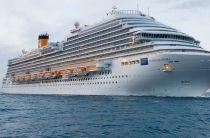
Costa Cruises' South America 2026–2027 ships & itineraries
Costa Cruises has confirmed its plans for the 2026–2027 South America season, outlining a program of itineraries operated by two ships - Costa...
December 29, 2025 - Cruise Industry
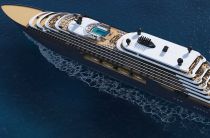
Ritz-Carlton's newest ship Luminara started Asia-Pacific cruises from Singapore
On December 23rd, The Ritz-Carlton Yacht Collection introduced its newest vessel, Luminara, to the Asia-Pacific market with a 7-night round-trip from...
December 27, 2025 - Cruise Industry
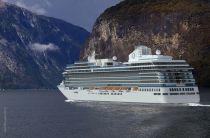
Oceania Vista's 2027 World Cruise segments opened for booking
Oceania Cruises has opened reservations for its 2027 world-spanning program aboard Oceania Vista, outlining an extensive schedule that ranges from a...
November 15, 2025 - Cruise Industry
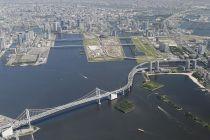
Tokyo reopens Harumi Passenger Ship Terminal after major reconstruction
Tokyo has formally reopened the Harumi Passenger Ship Terminal, reaffirming its position as one of the capital’s key maritime gateways for...
November 4, 2025 - Cruise Industry
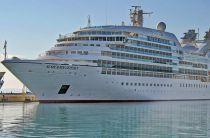
MOL-Mitsui Ocean Cruises unveils 2026 Japan voyages
MOL-Mitsui Ocean Cruises (Japan) released 22 new itineraries for 2026 scheduled for Mitsui Ocean Fuji under the theme “Funatabi &ndash...
October 25, 2025 - Cruise Industry
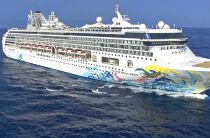
Star Navigator to resume Keelung operations for 2026 Japan and Korea season
StarDream Cruises has confirmed that its flagship Star Navigator (fka Resorts World One) returns to homeport Keelung (Taiwan China) in February...
October 6, 2025 - Cruise Industry
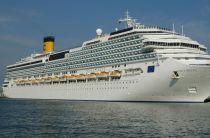
Costa Serena ship’s 2026 World Cruise spans Asia, Oceania, Australia, South America
Costa Cruises' ship Costa Serena has a global voyage from Tokyo to Buenos Aires, scheduled for October 18 to December 22, 2026. The 66-night...
July 1, 2025 - Cruise Industry
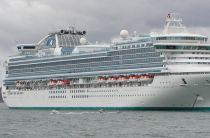
Princess Cruises homeport two ships (Sapphire & Diamond) in Singapore for winter 2026-2027
Princess Cruises will return two of its sister ships—Sapphire Princess joining Diamond Princess—to Singapore for the 2026-2027 Asia...
June 14, 2025 - Cruise Industry
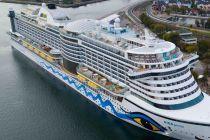
AIDA opens bookings for 470+ cruises in Summer 2027
The Carnival Corporation-owned German shipping company AIDA Cruises has released its summer 2027 schedule, comprising more than 470 voyages with...
May 25, 2025 - Cruise Industry
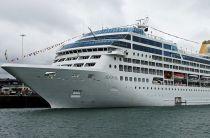
Azamara charts new course with Summer 2027 itineraries
Azamara Cruises has unveiled its Summer 2027 program, featuring 68 voyages and 6 Grand Voyages fleetwide. These itineraries emphasize extended port...
May 15, 2025 - show more news
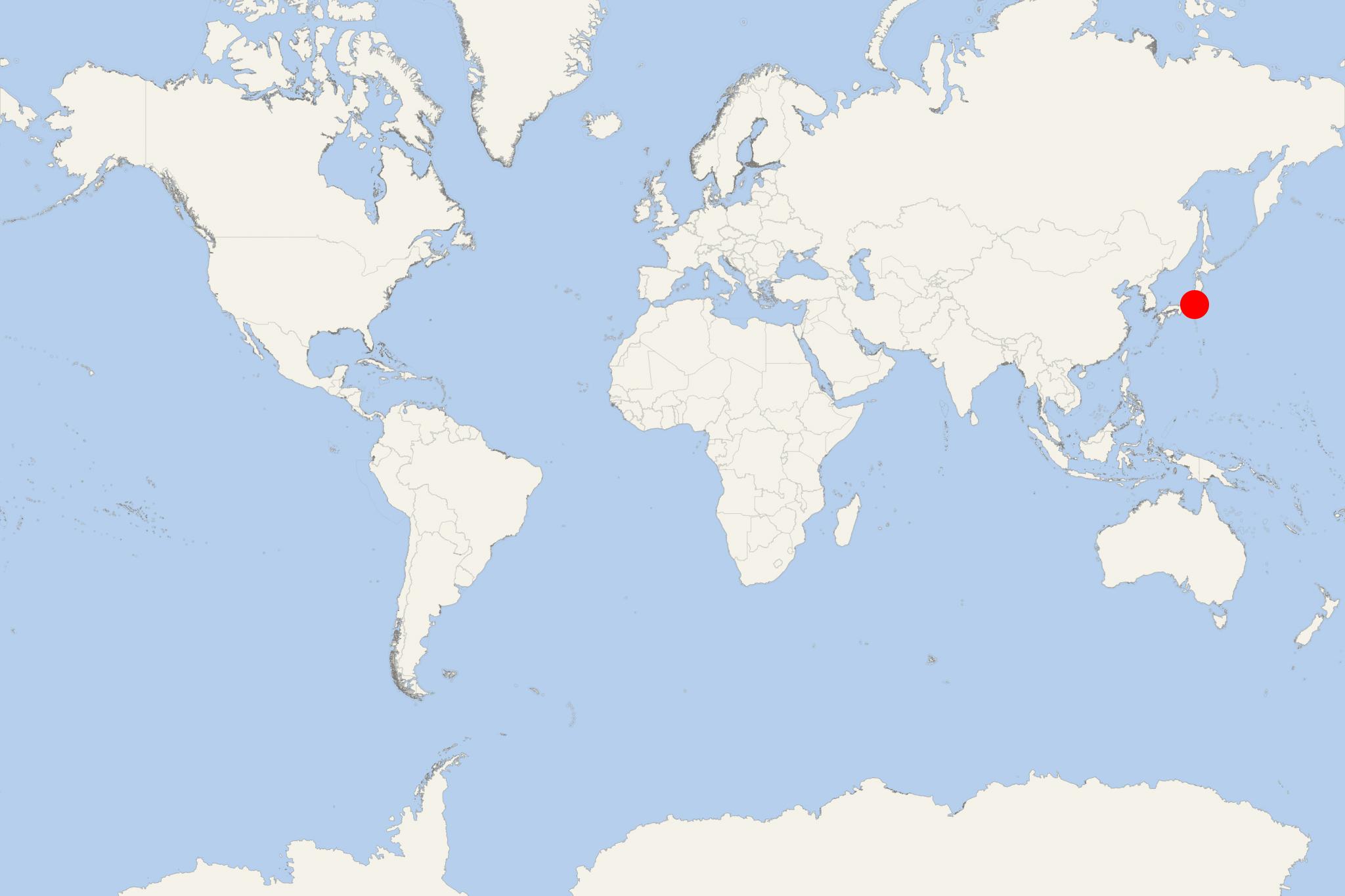
 43°F
43°F 
 Gentle breeze
Gentle breeze